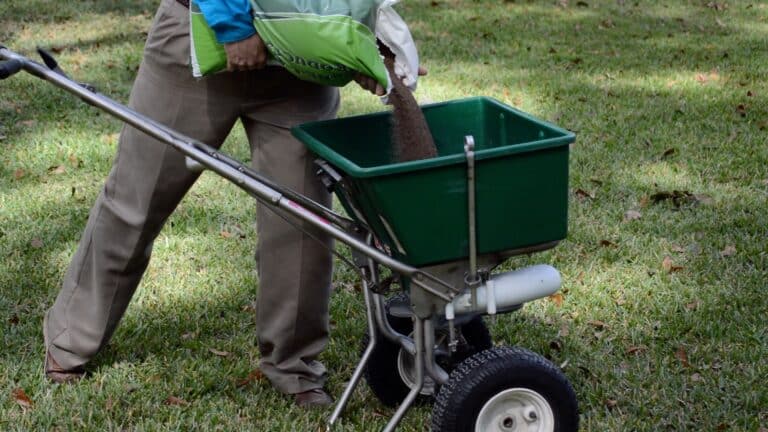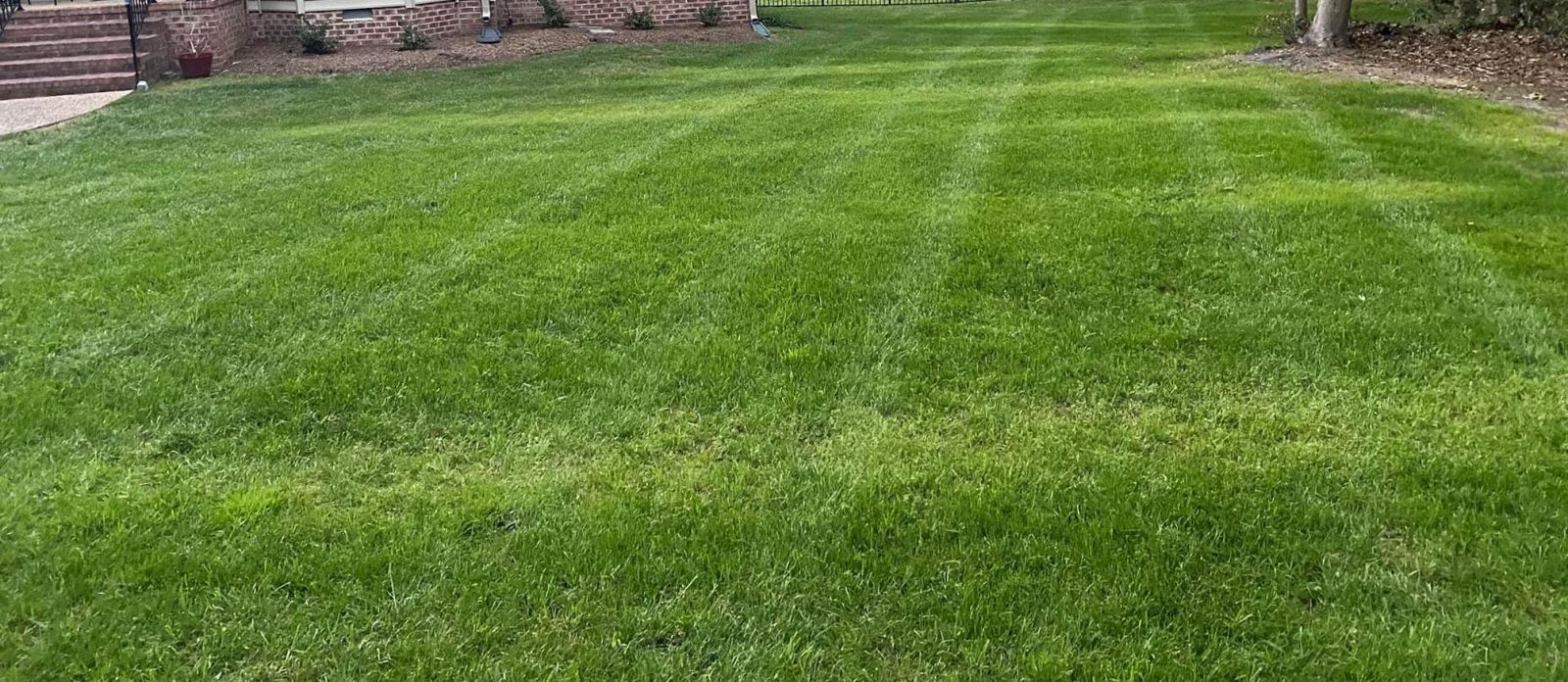The kind of soil in your lawn influences how healthy and vibrant your grass will grow. Most lawn grasses thrive in slightly acidic soil with a PH of 6 to 7, so it is essential to ensure your soil PH does not go below 5.5.
Adding lime to the soil of your lawn helps to boost soil PH and promotes grass growth.
Lime treatment for lawn is fundamental to lawn maintenance, so do not overlook it. However, despite being important, knowing when, how, and why you should treat your lawn with lime is essential.
For this reason, keep reading to learn why, when and how to lime your lawn.
Why Should I Put Lime On My Lawn?
As mentioned, lime is critical to lawn care. Here are the reasons:
- Balances soil PH – liming is an effective and cost-effective solution for neutralizing highly acidic soils. Acidic lawns cannot break down the nutrients introduced to the soil, rendering fertilization useless. Introducing lime to your lawn raises the PH, making your yard more alkaline and thus suitable for grass growth.
- Improves the structure of the soil.
- Boosts the nutrient’s availability.
- Aids soil microbe activity.
- Minimizes soil toxicity.
- Introduces sufficient amounts of calcium to your lawn.
How Do I Know If My Lawn Needs Lime?
Your lawn likely needs lime treatment if you reside in a desert or dry climate where the soils are alkaline.
In addition, your lawn can benefit from liming if your area is rainy and acid-loving plants like camellias and rhododendrons thrive. This is because the soils are probably acidic.
However, conducting a soil test is ultimately the surest way of determining whether your lawn requires lime.
You can visit a garden center for cost-efficient soil tests. Finding out if your yard needs lime is crucial because liming a property that does not require it results in time and money wastage.
Also read:
- Lawn Food vs Lawn Fertilizer
- Things You Should Never Do To Your Lawn
- How often can i apply sulfur to my lawn
Furthermore, liming highly alkaline soil may be detrimental to your lawn health, resulting in yellow, sickly grass. It would be best to test your soil annually to avoid introducing too much lime to your lawn.
You will only need to lime every few years once you establish proper soil PH in your yard.
If you do not intend on testing your soil frequently and have a tiny yard, you can test your soil PH using a soil testing kit.
One kit costs about $10 to $35 and can perform multiple tests (typically 12 to 15). The cost varies based on whether the kit examines for extra soil nutrients and the number of tests in it.
Alternatively, get yourself an electric soil PH meter that will serve you indefinitely and offers swift and accurate readings. You will spend around $50 to $70 to get one.
Regardless of the testing tool, ensure you have 3 to 4 soil samples. Get the samples by mixing your lawn soil with neutral-PH water, preferably distilled water, for accurate results. Test the PH of the water if you have doubts.
When Is The Best Time To Put Down Lime?
The best time to put lime on your lawn is fall when the sun is less intense, and the weather is cooler, so the risk of lime burning the grass is eliminated. This will give lime sufficient time to break down and integrate with the soil.
Before applying lime to the soil, conduct a soil test in spring. Put lime on your lawn before fall’s first frost appears to give the soil ample time to take in the lime in winter.
Do not spread lime on a wet, soggy lawn, wilted, dry yard, or when it is frosty.
You can put lime in the soil before seeding the lawn.
Can I Put Lime Down At The Same Time As Fertilizer?
You can simultaneously apply lime and fertilizer to your lawn. The fertilizer will supply the nutrients upon application, while lime release will occur more slowly, keeping the soil PH balanced over a long time.
However, test your soil PH before application to determine your best move.
You can fertilize your lawn first, then apply lime after a good amount of rain. Keep in mind that fertilizer uptake will not occur on excessively acidic soil.
However, if you decide to fertilize and lime at the same time, use granular lime instead of powdered lime. Additionally, water your grass three days in a row before application.
In addition, it is better to fertilize your lawn before applying lime after planting grass seeds to encourage optimum germination.
For this reason, you can lime your lawn 10 days after fertilizing and seeding to give the grass ample time to take in the nutrients.
How To Apply Lime To Your Lawn
Lime application is not just about spreading it on your lawn; you must do it right for your grass to benefit the most. Additionally, you must protect everyone that uses the lawn, including kids, adults, and pets.
Here is how to apply lime to your lawn correctly.
1. Test The Soil PH
Testing the PH of your soil ensures you apply lime to a lawn that needs it and the right amount.
2. Aerate the Lawn
Lime needs to seep into the soil for the roots to absorb instead of landing on thatch or the surface of the grass. Aerating your yard loosens the soil, allowing the lime to penetrate.
3. Apply Lime
Put the lime in a rotary spreader or a drop spreader, then spread it throughout your lawn in lines and mix it with the topsoil.
The soil should be dry during application. Never spread lime on your yard using your hands because the lye in the lime causes skin burns.
In addition, avoid the dust from getting into your lungs by putting on protective equipment like a respiratory mask. Consider hiring a landscaping professional to apply lime since they have the right tools and techniques.
4. Water In The Lime
Protect your grass blades from lime burns by sprinkling the lawn with water after application to remove any lime that fell on the blades.
The Benefits of Adding Lime to Your Lawn
Below are the advantages of adding lime to your yard.
1) Control Moss Problems
Moss flourishes in acidic conditions where grass cannot, so neutralizing the soil PH with calcitic lime helps your grass compete with moss effectively, lowering the chances of infestation. However, remember, lime doesn’t kill moss.
2) Balance the Soil PH
Soil that is too acidic cannot support the growth of healthy grass since it impedes the availability of essential nutrients like nitrogen, potassium, and phosphorus.
Neutralizing the PH of the soil using lime frees up the macro nutrients, boosting the odds of your lawn thriving. You will have a greener, thicker lawn.
3) Manage Weed Issues
Much like moss, acidic soil is conducive to weeds. Therefore, neutralize the soil by introducing lime if you want your grass to compete with unwanted plants.
4) Make the lawn Disease and Pest Resistant
A healthy yard is not the best place for lawn diseases and pests. Since yards need good soil to thrive, keeping proper soil PH is in your best interests.
5) Boost Fertilizer Performance
Liming nourishes the soil’s good bacteria hence improving the fertilizing efforts. The nutrients essential to plants become available when the soil PH is optimized.
What Happens If I Use Too Much Lime?
Using excess lime on your lawn removes soil acidity but renders it too alkaline, which is not good for the grass either.
The grass won’t uplift the macro nutrients to the grass blades, compromising their health. Simply put, too much lime changes the soil PH to undesirable levels. The grass will turn yellow.
If you apply too much lime on your lawn, it would be best to seek the services of a lawn care business to conduct soil PH and provide a customized solution to correct the problem.
Alternatively, dilute the lime by mulching your lawn for several weeks. You can also counteract the lime and revert the soil’s PH to a healthy level by applying horticultural sulfur.
Knowing the amount of lime to apply to your lawn is vital since it helps prevent excess usage. The type of soil in your lawn and the soil PH determines how much lime you will need to use.
Does Lawn Lime Hurt Pets?
Although lime is a natural substance, it is not fit for pet and human consumption. This is why you must wear protective gear during application.
Pellet lime causes stomach, eye, and skin irritation when small kids and pets come in contact with it.
For the safety of your pets, keep them from accessing the lawn after applying lime until it incorporates into the ground properly. Also, it is best for humans to avoid it until the lime soaks in.
Final Thoughts
I believe you now know everything you need to know about lime for lawns and can successfully apply this natural and essential substance to your yard.
If you are not confident about spreading the lime on your lawn by yourself, you can always hire a professional.

Hey there, I’m Derek Schew, a writer for Lawnholic.com, where we cover everything and anything related to lawns. As someone who’s spent countless hours tending to my own lawn, I’m passionate about sharing my knowledge and helping others achieve the perfect yard. From lawn care tips to product reviews, I’m committed to providing our readers with the most accurate and up-to-date information available. So whether you’re a seasoned lawn enthusiast or just getting started, I invite you to join our community and discover the joys of a lush, green lawn.



